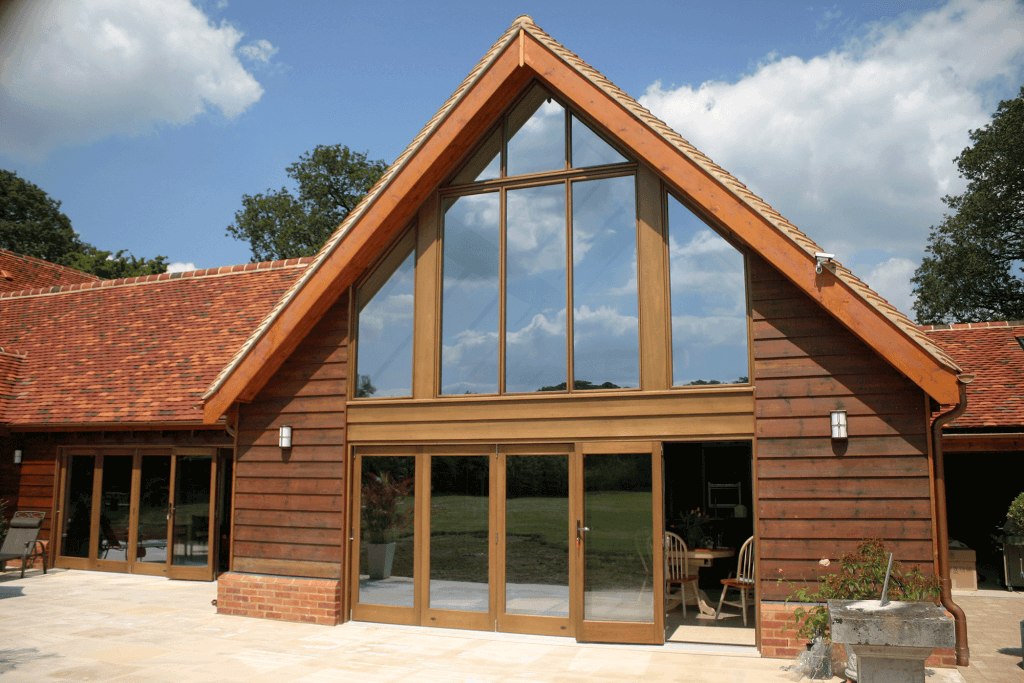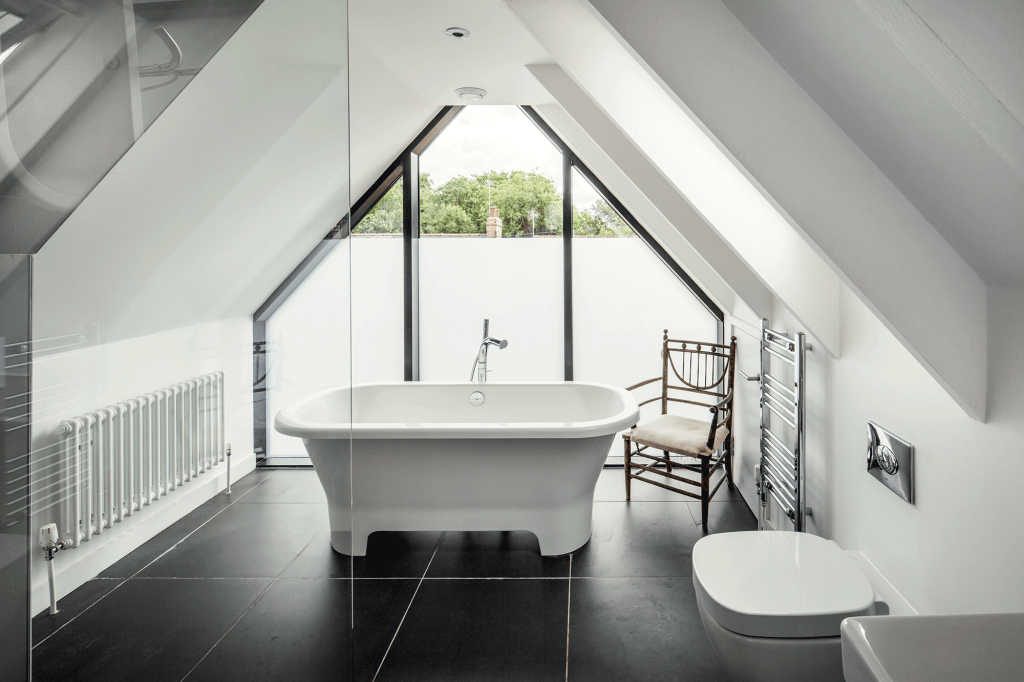
Use code BUILD for 20% off
Book here!
Use code BUILD for 20% off
Book here!As the hours of daylight are finally getting longer and balmy summer evenings are right around the corner, we start to remember just how good natural illumination can make us feel. So it’s no surprise that designing a home that pulls ample brightness inside as the sun moves across the sky is high on the priority list for most self-builders and renovators – and a glazed gable can help to achieve this.
Installing large spans of glazing is a clever trick for flooding rooms with natural light – and positioning them high up into the peak of your roof will maximise light gain and capture views on both storeys, not to mention add to your home’s architectural appeal.
Many people choose to use a glazed gable as part of a complete glass wall that reaches from ground level right up to the roof of a house. You can opt for slim-frame units that stretch all the way up the building, which work wonderfully in tandem with glazed doors and mezzanine levels.


Alternatively, glaze a full two storey structure by using twin sets of full-height glass, stacked on top of each other with the structural join clad in something that matches either the window frames or the facade.
Source it: Find the right glazing supplier for your project
If the gable end has a central chimney, look to glaze either side of it to create a design feature. The right style for you really hinges on how you want your house to look, its overall layout, design and location.
While a major advantage of installing expansive glazing is the ability to see out from your home across the surrounding scenery, putting glass in places that overlook neighbouring properties and their gardens could mean you face problems when it comes to gaining planning permission.
So you’ll need to work alongside a good designer to get the right balance between achieving a good view and illumination, while minimising any impact on neighbours.
Theofanis Anastasiadis, architect from Scenario Architecture, answers your questions on incorporating this design detail.
Think about the huge glazed areas seen in large commercial buildings; the same kind of thing can be done in a house, but it has to make sense in the context of the surroundings. This rule also applies to how many panes of glass you use and how big they are.
Modern structures tend to suit larger spans, for instance. The design also needs to match the project budget – using smaller windows will help to keep costs down.
There are various ways of supporting a big window and if the glass meets the roof then it will need to bear up against the weight of snow, too.
Your glazing supplier will be able to calculate what loads the system you’ve chosen is capable of withstanding – if it needs additional reinforcement then your structural engineer’s calculations should identify what’s safe.
If the glass is in an accessible area where people can lean on it, or there’s a danger of furniture bumping into it, then you’ll need to specify safety glazing that will withstand high pressure, vibrations and impact.
The right choice of frame material will depend on the look of the rest of the property. For example, if you have a traditional house where all fenestration is wooden, you might continue with the same material. We normally use aluminium because it is very strong – pick a product with a good guarantee so the blame for any structural defects should fall on the supplier.
Windows have a lower insulation level than solid walls, so there is a risk of rooms featuring lots of glass getting too warm in the summer and too cold in the winter – just think about what it’s like in a traditional conservatory.
But you can solve these problems with strategically placed shading and by making sure there is a good ventilation supply. Plus, your designer should look to minimise these issues by taking the sun’s movement into account when they draw up the plans.
Most people use a glazed gable to boost light and views rather than as a primary ventilation source, but it is possible to include opening windows. These tend to be electrically operated because they are often out of reach. It’s common to have glazed doors beneath, which means there’s adequate ventilation already in place.
If you are placing a glazed gable into an older structure then your designer needs to properly analyse the building to address any problems and establish if the glass frames would need extra support.
All issues in the structure need to be resolved prior to installing new features. But these things are always dealt with case-by-case because no building is exactly the same, so it’ll be down to the manufacturers and the structural engineer to reach the right solution for your home.
Top image:This contemporary extension by Scenario Architecture was inspired by a need to replace an old conservatory that became too cold in the winter and overheated in the summer
